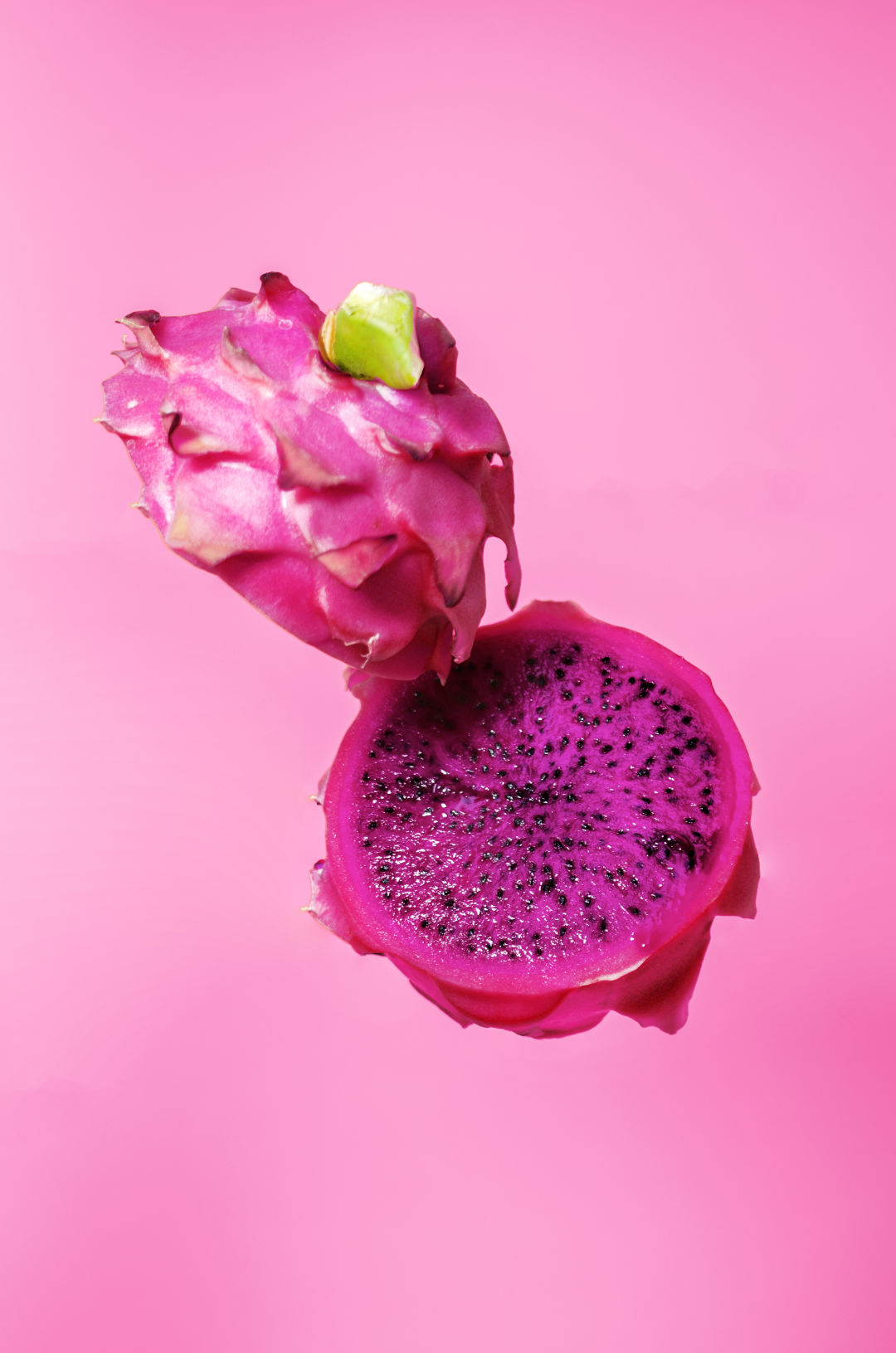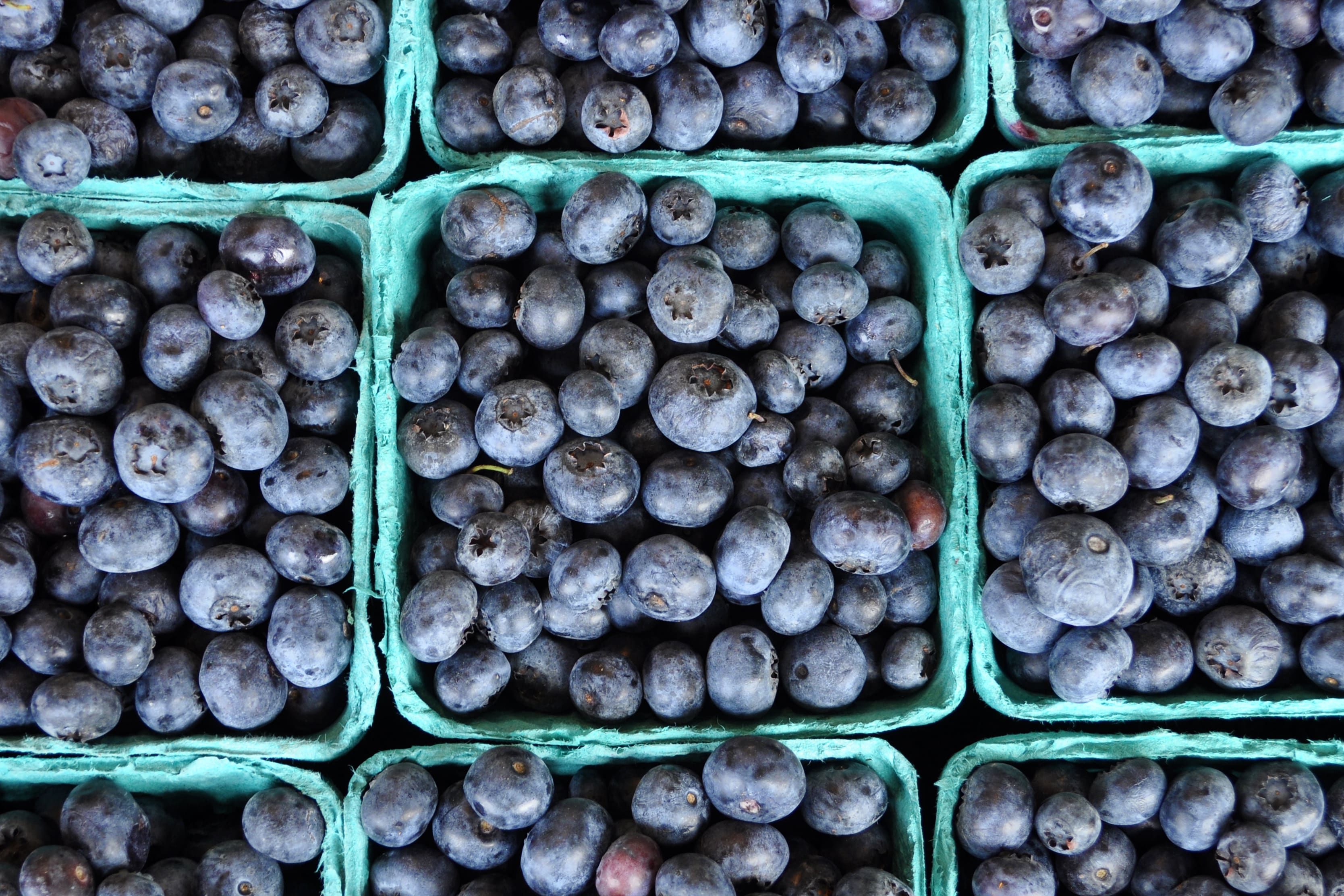Six Delicious Summer Fruits to Try Right Now

Dragon fruits have a vibrant, fuchsia-colored exterior and polka-dotted flesh.
One perk of a Florida summer? Access to amazing seasonal produce. There are the classics such as mangoes and pineapples, of course—but what else can we look forward to spotting at our local grocery stores? With health benefits and a world of culinary opportunities, here are six fruity summertime treats to seek out.
Novelty Grapes
Grape lovers, rejoice—novelty grape season is at its peak in July and August. Those with a sweet tooth should keep their eye out for Gum Drops or Cotton Candy varieties, which truly do taste like spun sugar. The unusually shaped Moon Drops add an artful flair to any cheese or fruit platter. Try popping any of them into the freezer for a tasty, health-conscious snack that will help you beat the heat.
Where to find them: Publix
Mangosteens
Mangosteen, called the “Queen of Fruit,” is a Southeast Asian delicacy with a dark purple skin and edible, cream-colored vesicles inside. Rich in antioxidants, essential vitamins and fiber, the tiny fruit packs a powerful health punch. Its flavor—simultaneously tart and sweet—is described as a combination of peaches, lychees and bananas. Though the sections can be eaten raw, like an orange, the fruit can be cooked into everything from jams to baked goods.
Where to find them: Detwiler's Farm Market
Dragon Fruit
Summertime heralds the start of dragon fruit, or “strawberry pear,” season. This mild, tropical fruit boasts a vibrant, spiky, fuchsia exterior with soft, speckled flesh that's reminiscent of a kiwi. High in essential B and C vitamins, dragon fruit is also a source of protein and fiber. Scoop the interior out of the skin to eat it straight, add it to a smoothie or cut slices to give a salad decorative flair. (Pro tip: when cut in half and hollowed, the dragon fruit's thick skin can be used as its own decorative bowl.)
Where to find them: Detwiler's Farm Market, Whole Foods
Longans
The longan fruit is a member of the soapberry family, which originated in tropical Asia; its name translates to “dragon's eye.” Similar to sister fruit like lychees or rambutans, longans have a thin skin which covers a sweet, slightly musky aril. After peeling and discarding the inedible seed, longans can be snacked upon as-is, dried into fruit snakes or used as a garnish in a summer cocktail.
Where to find them: Detwiler's Farm Market
Pluots
The summer season is prime time for stone fruit, including hybrid varieties. Through these fusions, farmers can grow specialized produce with unique flavors, colors, textures, and sweetness levels. Case in point: pluots, which are made by crossbreeding Japanese plums with apricots. High in potassium and dietary fiber, pluots are considered quite healthful—well, that is until you bake them into an upside-down cake. Hybrid fans can explore other fruit mash-ups, too, including the nectaplum (nectarine plum), the pluerry (plum cherry) and the peacotum (peach apricot plum).
Where to find them: Detwiler's Farm Market, Whole Foods
Skylar Rae Cherries
A colorful hybrid variety, Skylar Rae cherries are cultivated in Washington state and hailed among cherry lovers as having a wonderful sweet flavor. While delicious on their own, they offer many culinary opportunities ranging from shortcake to salad. Act fast—Skylar Rae cherry season starts in late June and only lasts about a month.
Where to find them: Trader Joe's, Whole Foods



